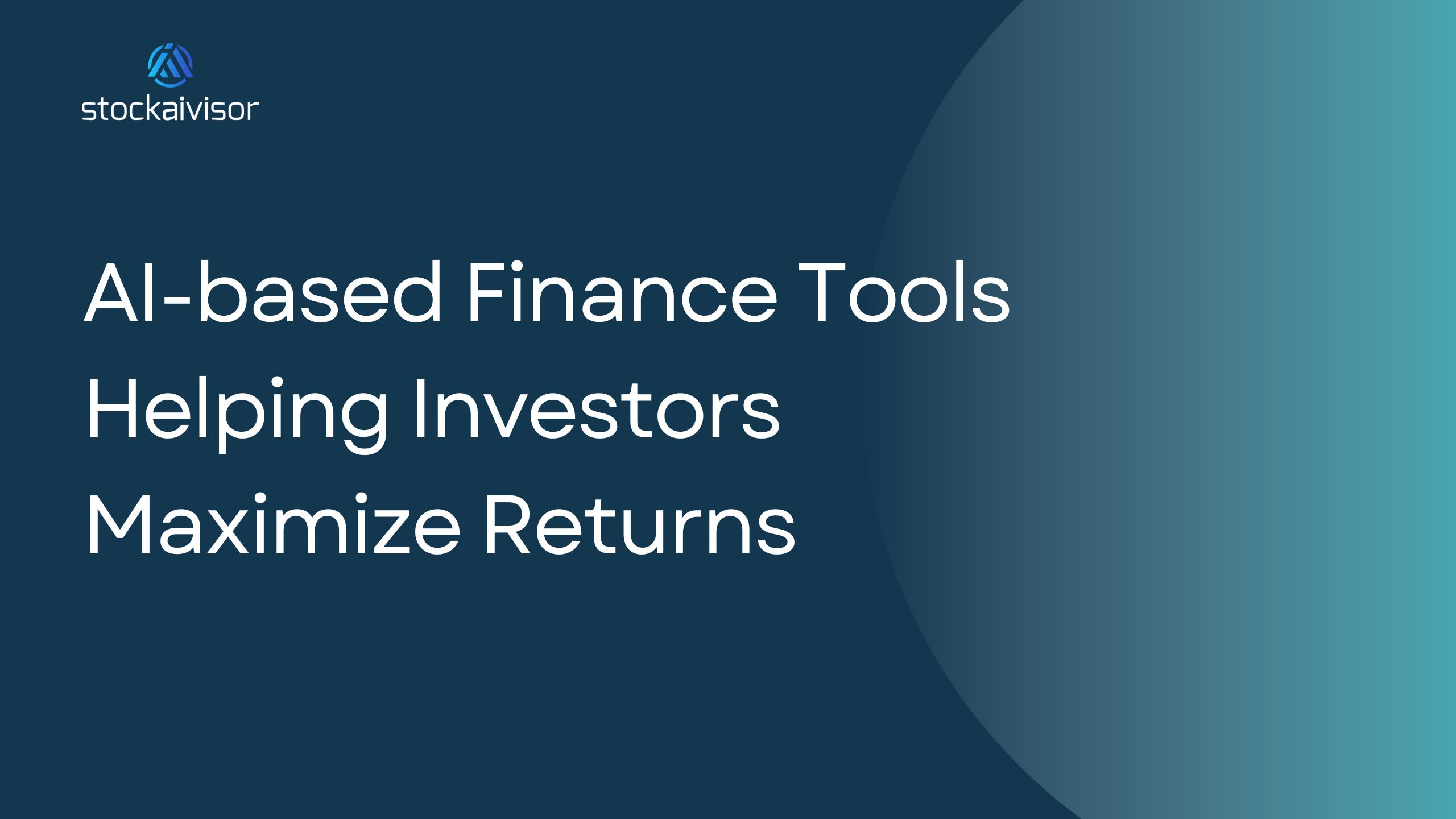
AI-based Finance Tools Helping Investors Maximize Returns
AI is everywhere, and finance is no exception. But the key is how efficiently we use AI in finance. Financial data is vast and complex, making it difficult to analyze and extract insights that help us derive useful conclusions, such as buy and/or sell signals.
Let’s consider a scenario in which we want to maximize our returns while minimizing our risk. How can we do that? Which tools help us the most? How about using a roboadvisor? Sounds good, doesn't it? A roboadvisor is a tool that allows us to incorporate the vast amount of information available to us. Before making a decision, investors need to analyze financial statements, macroeconomic data, technical indicators, alternative data, earnings announcements, news, and key financial information such as beta values p/e ratio and, as you can imagine, it is not an easy task. In financial markets, decisions often need to be made within seconds, so how can we compile, process, and make an informed decision that quickly? This is, in fact, where a roboadvisor comes in.
A roboadvisor automatically extracts all the information, processes it, and returns a signal. It can be designed to extract information periodically for example, every minute, hourly, or daily or it can be triggered manually.
Let me briefly go over the technicalities of a roboadvisor.
Firstly, we need a reliable data source to extract all the necessary financial information. This requires access to a financial data API such as Alpha Vantage, Yahoo Finance, EODHD, and similar providers.
Secondly, we must extract all relevant financial data from the API, including financial statements, stock prices, news, and technical indicators.
Thirdly, we select an appropriate large language model (LLM) to process and analyze the data using well-crafted prompts. Choosing the right LLM is crucial. While general-purpose models like GPT-4o can handle the task, it often makes more sense to use an LLM that has been pretrained specifically on financial data for better accuracy and domain expertise.
While generating the prompt in roboadvisor, you can define your risk perception, ultimate aim, your trading history so that you can get customized recommendation from roboadvisor.
Finally, if you want the roboadvisor to run periodically, you should implement a scheduler using cloud services or workflow orchestration tools like Apache Airflow.
That is it, following this way, you can create a roboadvisor. You can also see Stockaivisor’s roboadvisor run for NVIDIA as shown below:
from here: https://stockaivisor.com


Conclusion
In an era where milliseconds can make a difference in investment returns, leveraging AI-powered tools like roboadvisors is no longer a luxury but a necessity. By combining real-time financial data, advanced language models, and customizable strategies, roboadvisors empower investors to make faster, more informed, and more personalized decisions. With tools like Stockaivisor’s roboadvisor, even complex tasks such as analyzing NVIDIA’s financial outlook become streamlined and actionable. As technology continues to evolve, embracing AI in finance is one of the smartest moves investors can make to stay ahead of the curve and maximize their returns.
